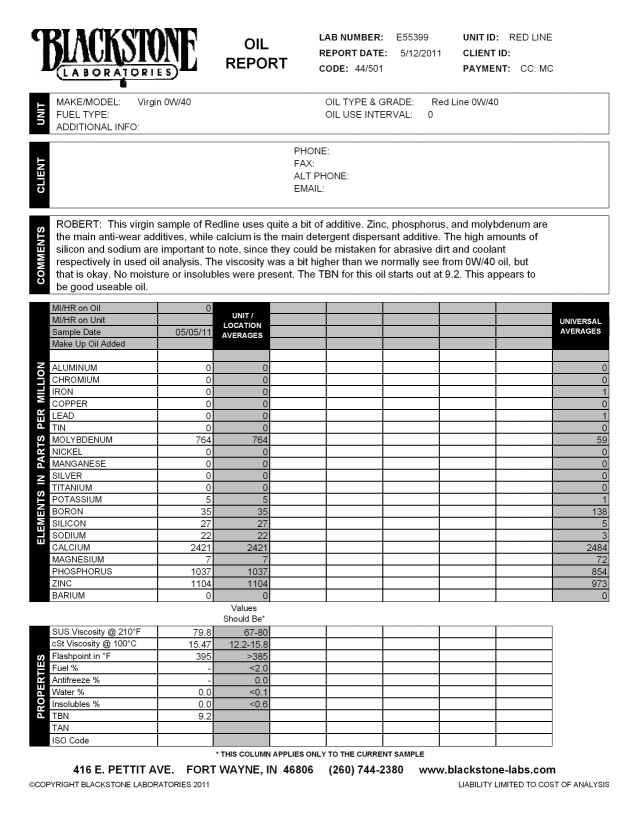Originally Posted By: ARCOgraphite
OP_ I'd talk to Dave, you MAY be able to safely go 1 step down in viscosity to a 40 with the RL (true synthetic) and pick up some HP - as long as you are not aggressively tracking this car and killing the oil temps. I would also stick with ONE oil type if its satisfactory - not good to be flip flopping chemistrys as this can "loose the hounds of Hades", as one package supersedes the other and cause odd shedding/wear.
I did communicate with Dave on this and their 5W50 is what's recommended by Red Line for this motor, but he didn't see any issue with stepping down a grade. I do believe the 5.9 HTHS viscosity of the RL 5W50 is on the thick side for a 50 grade. I have thought about using their 5W40, but decided to use an API approved oil instead ... at least until the power train warranty expires. I agree, I should just stick with what works, but I guess I'm still searching; I am hoping that M1 5W50 will be that oil. Dave indicated RL is compatible with other oil types and that switching between RL and other types will not be a problem.
OP_ I'd talk to Dave, you MAY be able to safely go 1 step down in viscosity to a 40 with the RL (true synthetic) and pick up some HP - as long as you are not aggressively tracking this car and killing the oil temps. I would also stick with ONE oil type if its satisfactory - not good to be flip flopping chemistrys as this can "loose the hounds of Hades", as one package supersedes the other and cause odd shedding/wear.
I did communicate with Dave on this and their 5W50 is what's recommended by Red Line for this motor, but he didn't see any issue with stepping down a grade. I do believe the 5.9 HTHS viscosity of the RL 5W50 is on the thick side for a 50 grade. I have thought about using their 5W40, but decided to use an API approved oil instead ... at least until the power train warranty expires. I agree, I should just stick with what works, but I guess I'm still searching; I am hoping that M1 5W50 will be that oil. Dave indicated RL is compatible with other oil types and that switching between RL and other types will not be a problem.
Last edited:

